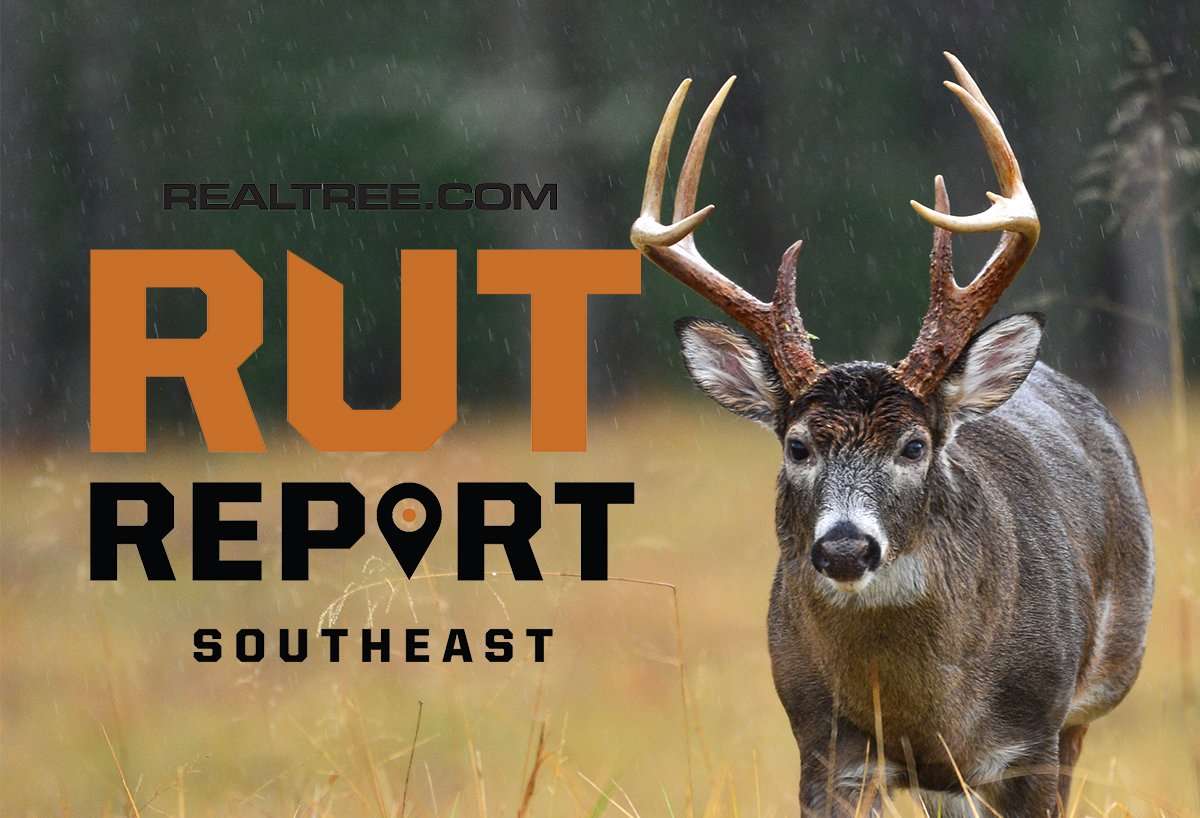It's the late season, and it's always tough. If you want to end on a high note, you've got to be in the stand.

Early December has been full of unseasonably warm, rainy weather in most of the Southeast region. It was 70 degrees on Sunday, and there were springlike storms in the wee hours of Monday morning, including a couple of confirmed tornadoes in western Kentucky and Tennessee.
On the one hand, my cell cameras have been mostly void of daylight deer activity over the past few days. But there have been some bright spots, too. As I've been out scouting ahead of next weekend's late muzzleloader hunt, I've noticed a definite uptick in fresh rubs and scrapes.
Last week, I walked a farm in Tennessee and checked a trail camera that's been on a trail intersection, next to a grove of oaks, since Halloween. One red oak in particular had been drawing a large family group of does and fawns for several days, and there were also two nice bucks making regular appearances on the camera. Despite the balmy forecast, I decided to try a quick morning hunt.
I slipped in early Wednesday and scaled a tall poplar tree in my climbing stand. The first of the two bucks — a wide 8-pointer — came by me right at shooting light. Despite my being higher than I'd normally climb (and I normally like to be 20 feet plus up a trunk), the buck was on a steep hillside next to me, and so at near eye level when he walked by. The leaves were damp that morning, and I didn't hear him coming. My first clue that he was there was a stomp as I reached to get a neck gaiter out of my pack. I got a glimpse of him before he bounded away.
Soon after that, the group of does and fawns came feeding to within 20 yards of my tree, digging at the dirt for the remaining red oak acorns. A couple of forkhorns barged onto the scene and sent the does scattering. Ten minutes later, the second of the two bucks I'd seen on camera — another nice 8 — came sneaking in from my left. After a standoff at 12 yards, he finally looked away long enough for me to draw my bow and fill my second Tennessee buck tag of the season.
Though the peak breeding has come and gone for much of the region, it's still not uncommon to have a hunt like that and see rutty activity through the New Year in the Southeast. Some areas, of course, simply have later ruts. But in most of the region, there are stops and starts as some does enter a late estrous cycle, and some doe fawns cycle for the first time. The secondary rut isn't the punctuated event of the first rut, but instead a trickling event that can seem to last for weeks.
As with the primary rut, finding the does is key to hunting success right now, and that means locating preferred food sources. Good luck finding standing corn or beans around here; most of that was cut long ago, and today's farmers are pretty good at their jobs. They don't leave much waste grain on the ground. Green browse and cover crop wheat and rye are attractive, and red oaks are still drawing deer. Food plots, especially brassicas like the purple top turnips I planted back in September, are getting more daylight action on my cameras than anything else. When you find something good — new pictures or hot sign — hunt it immediately. Patterns don't last long in the late season, and let's be real: You're running short on time.
One final point for late-season bowhunters, especially. Don't underestimate the concealment advantage you had back when leaves were still clinging to the trees. The canopy is barren now, and deer can spot you from a long way. Right now, beating their eyesight from a treestand is arguably as difficult as beating their nose. Climb higher, camo up, and sit still. Hunt from broad trees with multiple trunks if possible, and look for ambushes with cedar backdrops if you can find them. There's no shame in sitting in a ground blind or shooting house, either.
Late-season hunting is tough, and around here you'll run the clock out by trying to play the weather. Hunt when you can, and be smart about it when you go. And remember that the deer you're hunting right now are as wary as they'll be all year.
(Don't Miss: A 170 Illinois 8 Named Buster Douglas)







